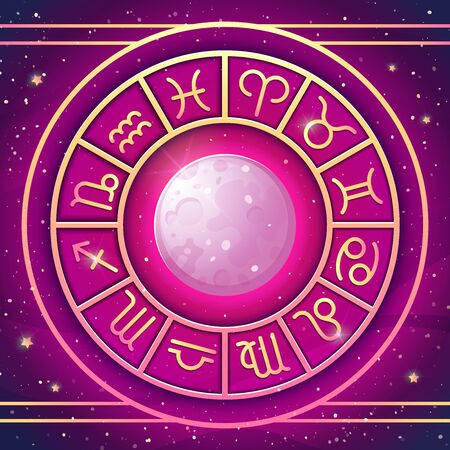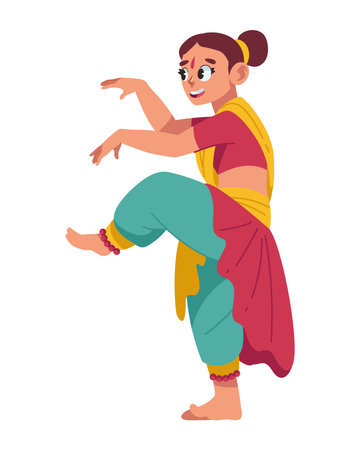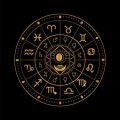Introduction to Traditional Indian Remedies in Astrology
Indian astrology, or Jyotish Shastra, is deeply woven into the fabric of daily life across the country. For centuries, people from every walk of life have turned to astrological remedies to overcome obstacles, attract positivity, and seek harmony in their personal and professional spheres. These remedies—ranging from sacred rituals like Hanuman Puja and Mangal Path to the symbolic use of auspicious colours such as red—are not just spiritual practices but also expressions of India’s rich cultural heritage. In Indian society, it is common to consult astrologers when faced with challenges, be it health concerns, career uncertainties, or relationship issues. Through prescribed remedies, individuals hope to appease planetary influences and restore balance. Such traditions are passed down through generations, making these practices both a source of comfort and a vital part of community identity. By understanding the importance of these remedies in astrology, we gain insight into how faith and tradition guide millions in India on their journey toward personal growth and emotional well-being.
2. Hanuman Puja: Significance and Rituals
In the landscape of Indian spiritual remedies, Hanuman Puja stands out as a revered practice deeply intertwined with both personal growth and astrological solutions. Lord Hanuman, the symbol of strength, devotion, and unwavering faith, is believed to remove obstacles, particularly those associated with adverse planetary influences like Mangal Dosha (Mars affliction). Performing Hanuman Puja is considered auspicious not only for protection against negative energies but also for gaining courage, mental clarity, and discipline in everyday life.
Spiritual and Astrological Importance
Hanuman Puja holds a special place in Vedic astrology, especially for individuals facing challenges due to Mars-related doshas or during Sade Sati (the seven-and-a-half-year Saturn period). Devotees believe that by sincerely performing this puja, one can mitigate the malefic effects of planets, promote positivity at home, and enhance inner resilience to face lifes difficulties. The act of worshipping Hanuman is also said to foster humility and self-awareness, core aspects of emotional healing and personal transformation.
Common Mantras Used in Hanuman Puja
| Mantra | Purpose |
|---|---|
| Hanuman Chalisa | General well-being and removal of obstacles |
| Bajrang Baan | Protection from evil forces and negativity |
| Sankat Mochan Hanuman Ashtak | Relief from difficult situations (Sankat) |
Essential Ritual Practices
- Worship is typically performed on Tuesdays or Saturdays, which are considered auspicious for Lord Hanuman.
- The devotee offers sindoor (vermilion), jasmine oil, red flowers, and laddoos (a type of sweet) to the deity—each carrying symbolic meanings rooted in Indian culture.
- Sincere recitation of Hanuman Chalisa or other mantras while maintaining a pure mind amplifies the spiritual benefits.
- Some families perform special havans (fire rituals) or organize group readings of sacred texts such as Ramayan Path for collective blessings.
Cultural Relevance in India
The presence of Hanuman temples across cities and villages underlines his widespread appeal among Indians seeking divine intervention for physical safety, career growth, or emotional stability. The rituals seamlessly blend into daily life—from schoolchildren praying before exams to professionals seeking confidence during career transitions—demonstrating how traditional wisdom continues to guide modern aspirations. By embracing these remedies with faith and discipline, individuals find not just relief from astrological concerns but also a deeper connection with their own inner strength and resilience.

3. Mangal Path: Remedy for Mars Dosha
Within the vast landscape of Indian astrology, Mangal Path holds a special significance as an effective remedy for individuals affected by Mangal Dosha, also known as Manglik Dosha. In Vedic beliefs, Mangal Dosha arises when Mars (Mangal) is unfavorably positioned in one’s birth chart, often leading to disturbances in marital harmony, delays in marriage, or persistent conflicts. For countless families across India, seeking solutions through spiritual rituals is both a tradition and a source of hope.
Understanding the Role of Mangal Path
The Mangal Path is a series of sacred recitations and prayers dedicated to pacifying the ill effects of Mars. The ritual typically involves chanting specific verses from Hindu scriptures—most commonly the Mangal Chandika Stotra or Hanuman Chalisa. These chants are believed to invoke the blessings of Lord Hanuman or Lord Mangal, both revered for their strength and ability to neutralize planetary obstacles. The act of chanting is not just about words; it’s a process that requires faith, discipline, and emotional investment from the seeker.
Typical Rituals and Community Practices
A traditional Mangal Path ceremony is often conducted on Tuesdays—the day associated with planet Mars. Devotees gather at temples or homes, sometimes under the guidance of a knowledgeable pandit (priest). Offerings such as red flowers, jaggery, red lentils (masoor dal), and sindoor (vermilion) are made to symbolize Mars’s fiery nature and appease its influence. Lighting a diya (oil lamp) with mustard oil further enhances the spiritual ambience.
Collective Healing Through Faith
In many Indian communities, Mangal Path becomes more than an individual remedy; it transforms into a collective healing experience. Families participate together, reinforcing bonds and shared intentions for peace and prosperity. In some regions, group ceremonies are organized in local temples where dozens of people join hands in prayer, amplifying positive energies through unity.
Cultural Relevance Today
The practice of Mangal Path continues to thrive in modern India. While urban lifestyles may have shifted certain rituals into more simplified forms, the core belief remains unchanged—faith can move mountains and alter destinies. For those facing challenges attributed to Mars Dosha, this remedy offers not only astrological relief but also psychological reassurance rooted deeply in centuries-old traditions.
4. The Symbolism and Astrological Power of Red Colour
In Indian astrology, red is not just a colour—it is a powerful symbol and a crucial element in various remedies, especially during Hanuman Puja and Mangal Path. Red signifies energy, strength, courage, and auspiciousness. This vibrant hue is associated with both Lord Hanuman and the planet Mars (Mangal), making it an essential aspect of astrological rituals aimed at overcoming obstacles and channelising positive vibrations.
Why Is Red Considered Auspicious?
The importance of red in Vedic tradition is deeply rooted in its energetic resonance. In astrology, Mars represents drive, vitality, and assertiveness; its element is fire. Worshippers offer red flowers, sindoor (vermilion), and red clothes to Lord Hanuman and during Mangal Shanti poojas to amplify these qualities in their own lives. The colour acts as a medium to invoke divine blessings and strengthen one’s inner resolve.
Red Colour in Hanuman Puja & Mangal Remedies
| Remedy | Use of Red Colour | Cultural Significance |
|---|---|---|
| Hanuman Puja | Red sindoor, red cloth for idol, red flowers, offering of boondi ladoos (often coloured red) | Symbolises devotion and draws the blessings of Hanuman for courage and protection from negative energies |
| Mangal Path/Puja | Red sandalwood mala, red attire, red sweets or fruits as prasad | Appeases Mars’ fiery influence, encourages strength, success, and marital harmony |
The Deeper Astrological Insight
According to Indian astrological wisdom, red is believed to activate the root chakra (Muladhara), which grounds individuals and fuels their confidence. During periods of Mangal dosha or when seeking Hanuman’s intervention for challenges like health issues or delays in marriage, incorporating red into rituals ensures alignment with cosmic forces that foster growth and resilience. Thus, the presence of red is more than tradition—it is an intentional act to attract auspiciousness and personal empowerment on one’s spiritual journey.
5. Popular Local Practices and Regional Differences
India’s diverse cultural landscape ensures that remedies like Hanuman Puja, Mangal Path, and the use of red colour in astrology are interpreted and practiced differently across regions. In North India, especially in states like Uttar Pradesh and Bihar, Hanuman Puja is often performed every Tuesday and Saturday with devotees offering sindoor (vermilion) and ladoos to Lord Hanuman. The ritual is seen as a remedy for overcoming fear, black magic, and the negative effects of Mars (Mangal). In contrast, in Maharashtra and Karnataka, Mangal Path is more commonly recited in temples dedicated to Lord Mangala or Subramanya Swamy. Here, families gather to conduct group readings of the Mangal Path from ancient scriptures as a way to strengthen Mars’ positive influence on marital harmony and career prospects. The importance of red colour also takes on regional flavours. In Tamil Nadu, red flowers and kumkum are offered to deities not only during Hanuman Puja but also in rituals for the goddess Mariamman to ward off diseases. Meanwhile, in Rajasthan, brides wear deep red sarees during marriage ceremonies as a symbol of Mars’ protection and auspicious beginnings. These regional differences highlight how local beliefs, available resources, and traditional stories shape the interpretation of these remedies. While the core astrological reasoning remains consistent—seeking Mars’ favor or pacifying its malefic effects—the methods are adapted to fit regional customs, languages, and even seasonal festivals. Such diversity underscores the emotional depth with which Indian communities approach astrological remedies, blending ancient wisdom with personal faith and local heritage.
6. Personal Experiences and Growth through Remedies
Across India, countless individuals have found profound transformation and inner growth through the practice of Hanuman Puja, recitation of Mangal Path, and embracing the vibrant symbolism of red in astrology. Each person’s journey is unique, yet their stories echo a common thread—of overcoming challenges, discovering inner strength, and achieving a deeper sense of self-realisation.
Stories of Transformation
Take for example the experience of Priya Sharma from Delhi. Struggling with anxiety and uncertainty about her career, Priya turned to Hanuman Puja on the advice of her grandmother. Through consistent worship and chanting of Hanuman Chalisa every Tuesday, she gradually experienced a calmness within herself. She recalls how the ritual instilled discipline in her routine and brought clarity to her decisions. Today, Priya credits these practices for not just external progress but also for nurturing her emotional resilience.
Self-Realisation through Mangal Path
Similarly, Rakesh Singh from Lucknow shares his journey with Mangal Path. Facing obstacles in marriage and personal relationships due to Manglik dosha, he began attending collective Mangal Path sessions at his local temple. Over time, he noticed a shift in his confidence and communication skills. Rakesh explains that beyond astrological remedies, the group prayers fostered a sense of community and support, helping him realise his own worth and purpose.
The Emotional Power of Red
For many women like Sushmita Banerjee from Kolkata, incorporating the colour red—be it through sindoor, bangles, or attire—has been more than just tradition. For Sushmita, red became a reminder of strength and courage during tough phases in her life. She believes that this conscious embrace of red helped her channel positive energy and remain hopeful even in testing times.
Lessons in Personal Growth
These narratives highlight how traditional remedies are not just rituals but powerful tools for emotional healing and self-improvement. Whether it is chanting sacred verses or donning auspicious colours, these acts become moments of reflection that allow individuals to reconnect with themselves. In Indian culture, such remedies serve as both spiritual anchors and catalysts for personal evolution—proving that faith, when combined with action, can truly transform lives.


